 PAM PATTERSON PAM PATTERSON
|
 VISUAL PERFORMANCE AUDIO/VIDEO STATEMENT BIO RESUME EMAIL VISUAL PERFORMANCE AUDIO/VIDEO STATEMENT BIO RESUME EMAIL
|
|
PERFORMANCE Brick (2014) commissioned performance for Visualeyez, Latitude 53, Edmonton 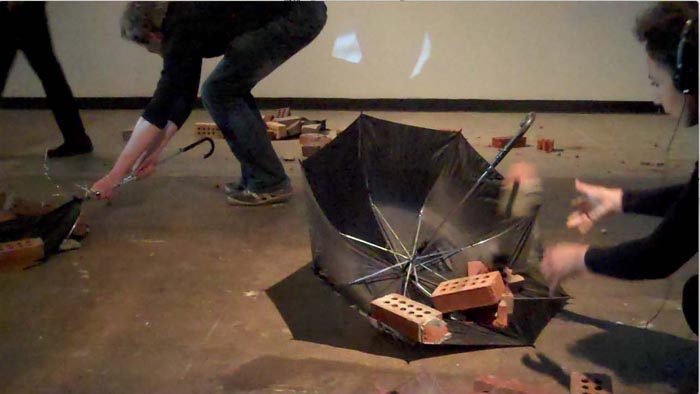 click to view BRICK images In celebration of the Edmonton-based company, The Brick, and in acknowledgement of other “brick” denotations, BRICK, as performance, acts as a concretization of cultural, political and social phenomena. “Brick”, as noun, identifies a component used for constructions which contain, shelter, and protect and also, as slang term, used to identify a person who is solid, dependable and socially integral. But for those of us whose participation in society is partial due to class, race, age, or ability the “brick” acts to separate us from accessing services, needs and spaces. We have been rendered as vulnerable and in many cases inoperable. This collaborative performance work explores the body politic as I use my surgically altered, aging, and disabled body as a grotesque and challenging site for cultural intervention. Elements combine in juxtaposition in an interior industrial gallery space with projections, sound, a pile of bricks, umbrellas and disability artists/performers/activists. Emigrante Desplazado (2014) Independence DOM, Dominican Republic. 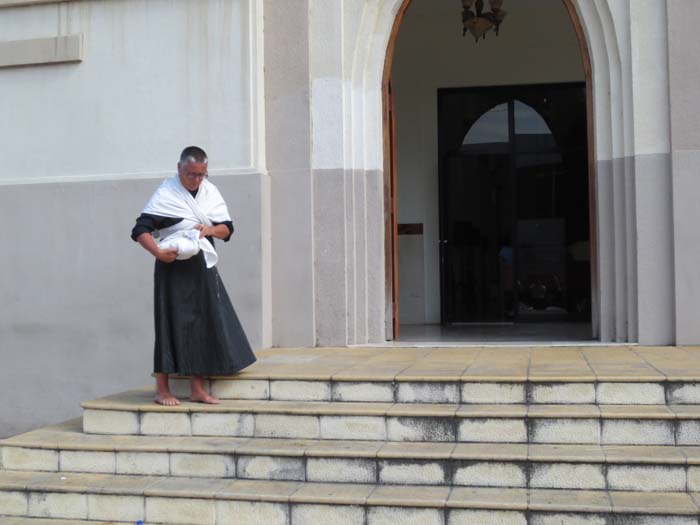 It is said that when Saint Dominic passed the limits of towns and villages, he took off his shoes, and, however sharp the stones or thorns, he trudged on his way barefoot. In doing so one might expect he, in his walking, quietly ruminated on his faith and humanity. He saw this effective combining of contemplation and activity as integral to human life. The rosary was both a Dominican object and action which marked this contemplation. An older Irish emigrant woman is displaced, lost, and alone in the new world. Many, like her, left Europe; some were sent to the Dominican Republic. The Irish were escaping poverty and oppression. As a victim of colonial rule, this displaced migrant could be allied with the Dominicans in sensibility, but as a white woman, she might also be seen as representative of the colonizer. Contemplation and activity combine in a performance action either on the stone floor inside the Fort or the hard square of Independence Plaza, Puerto Plata, DR. 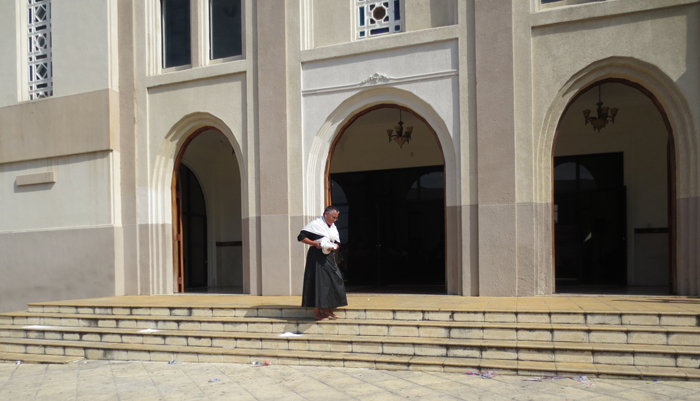 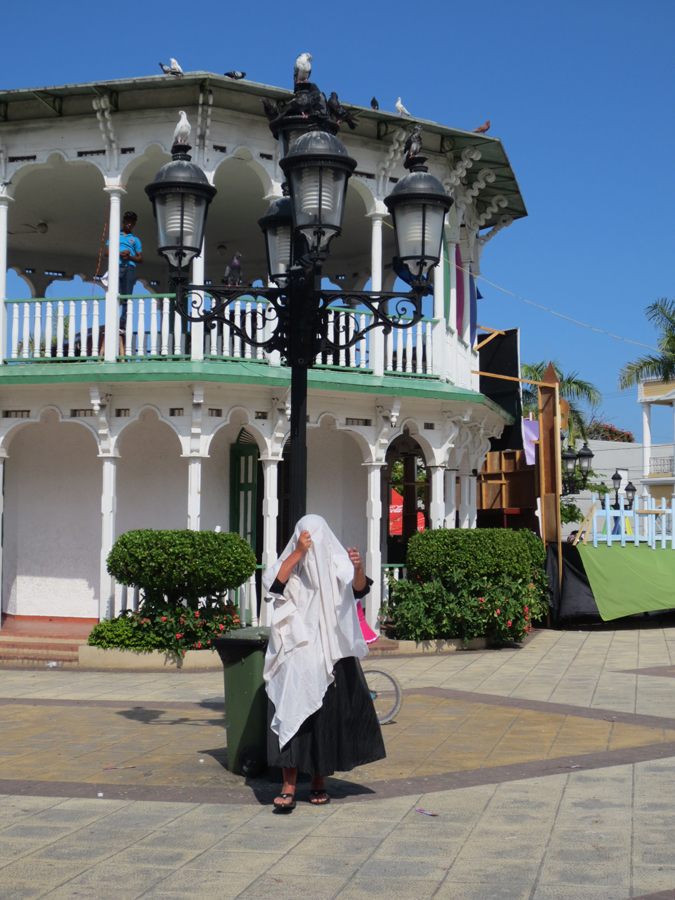 Red Square (2013) 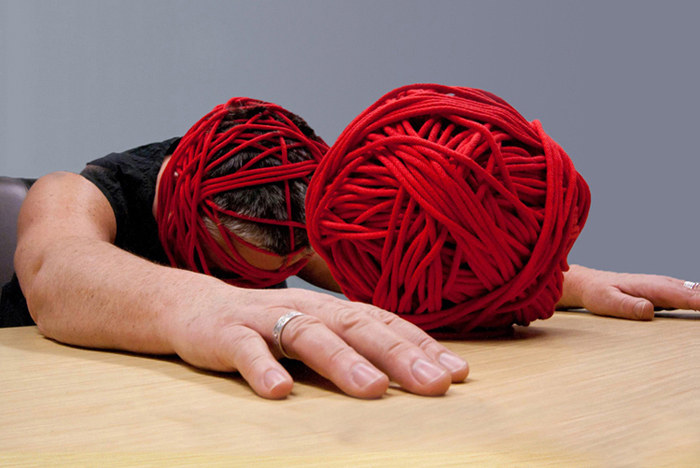 click to view Red Square video and photographs Red Square was named neither for the colour of its bricks nor for a link between the colour red and communism. Rather, the name came about because the Russian word krasnaya can mean either "red" or "beautiful". Red Square was considered a sacred place and now, is a world heritage site; a centre for cathedrals, museums and government. Various festive processions have been held there as well as executions and military or victory parades. It provides a complex site for culture and the display of state power. It provides an iconic space for perceived stability and safety. But as we know, such spaces, and the institutions they commemorate, can be problematic. When unsuccessfully and relentlessly negotiating institutions, we can feel mired in red tape, deadened by bureaucratic meetings, and unable to succeed. We are at a loss, for this is a system organised to defend its hierarchy and its (unacknowledged) class bias. It hides its failings under self-aggrandizing and obfuscating rhetoric. I journey through the halls of an educational institution where I teach, tracking and marking space, trawling a wrapped ball of red twine, clutching my “red square” like a child’s blankey. It is a red army blanket used by Canadian troops. Its presence speaks to warmth, comfort, safety but also can reference the Canadian government’s distribution of disease-ridden blankets to its native people with the intention to (successfully) decimate their numbers. Lighthousekeeping (2009) & Glenora Crossing (2010) 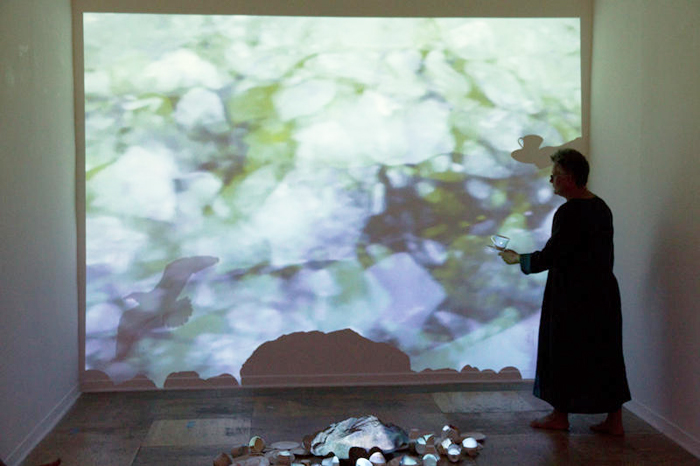 Glenora Crossing (2010) combined performance action, video projection, and installation for a performance event at Propeller Gallery entitled, Within This Body. The performance looks at the relationship between the problematics of cancer “survival” and of the “food” chain that plays out among fish, seagulls, and eagles. The story speaks of my weekly winter journeys to try and see the eagles at the Glenora Ferry crossing. The action: I attempt to build and balance on my lap a growing tower of cup and saucers. Playing on the video projection before me is the image and sound of crunching ice as cut by the ferry. This ice image is overlaid with small seagull silhouettes which appear and fade. And, while I witness the seagulls feeding on the fish, I never see the eagles. Glenora Crossing speaks of women, frustration, absence, and my journey toward understanding and appreciating death. 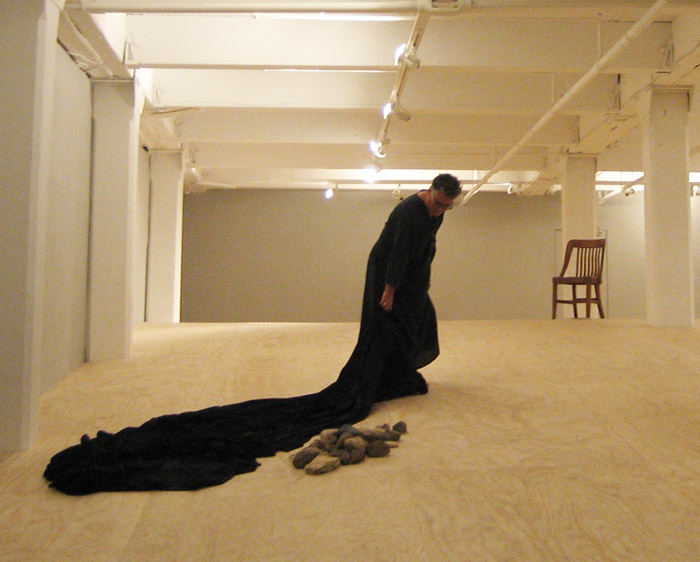 Lighthousekeeping (2009), ACEARTINC, Winnipeg.
Lighthousekeeping (2009), ACEARTINC, Winnipeg.Cellu(h)er Resistance: The Body with/out Organs? (2008) 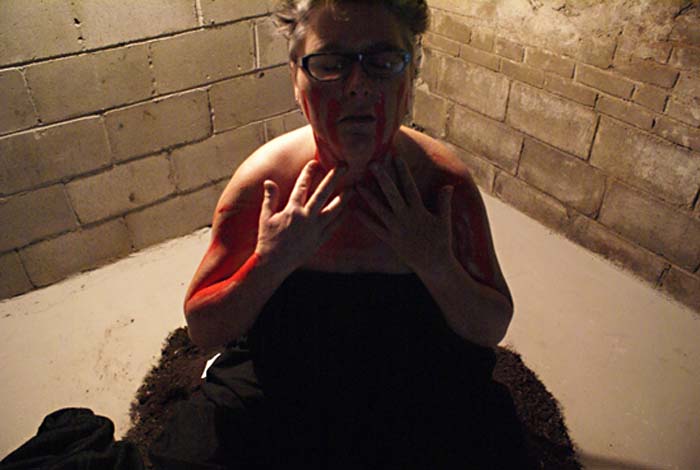 click to view Cellu(h)erResistance on the ccca website. After decades of dis-ease, poverty, disability and being surgically reconfigured through surgery, my hands make another body for my body.... there are sounds, images, becomings. It is accomplished the moment I undertake it. It isn’t the case that the body/I like(s) pain per se but rather that the body/I like being a Body with/out Organs and pain is the price the body/I is/am willing to pay for that. <<--back to top of page |